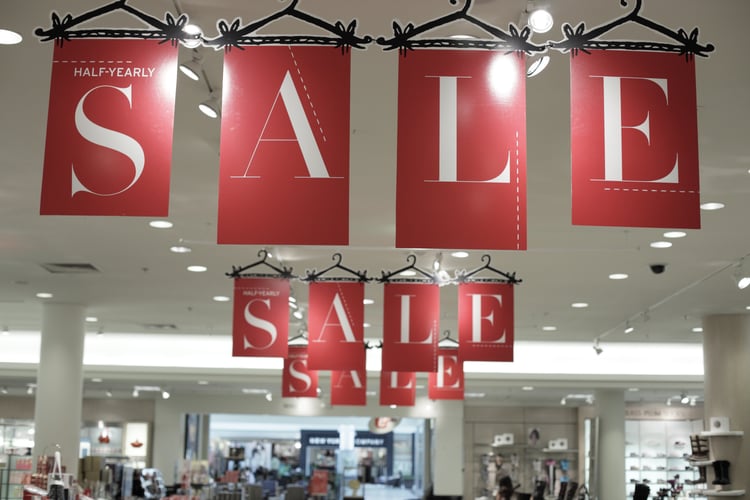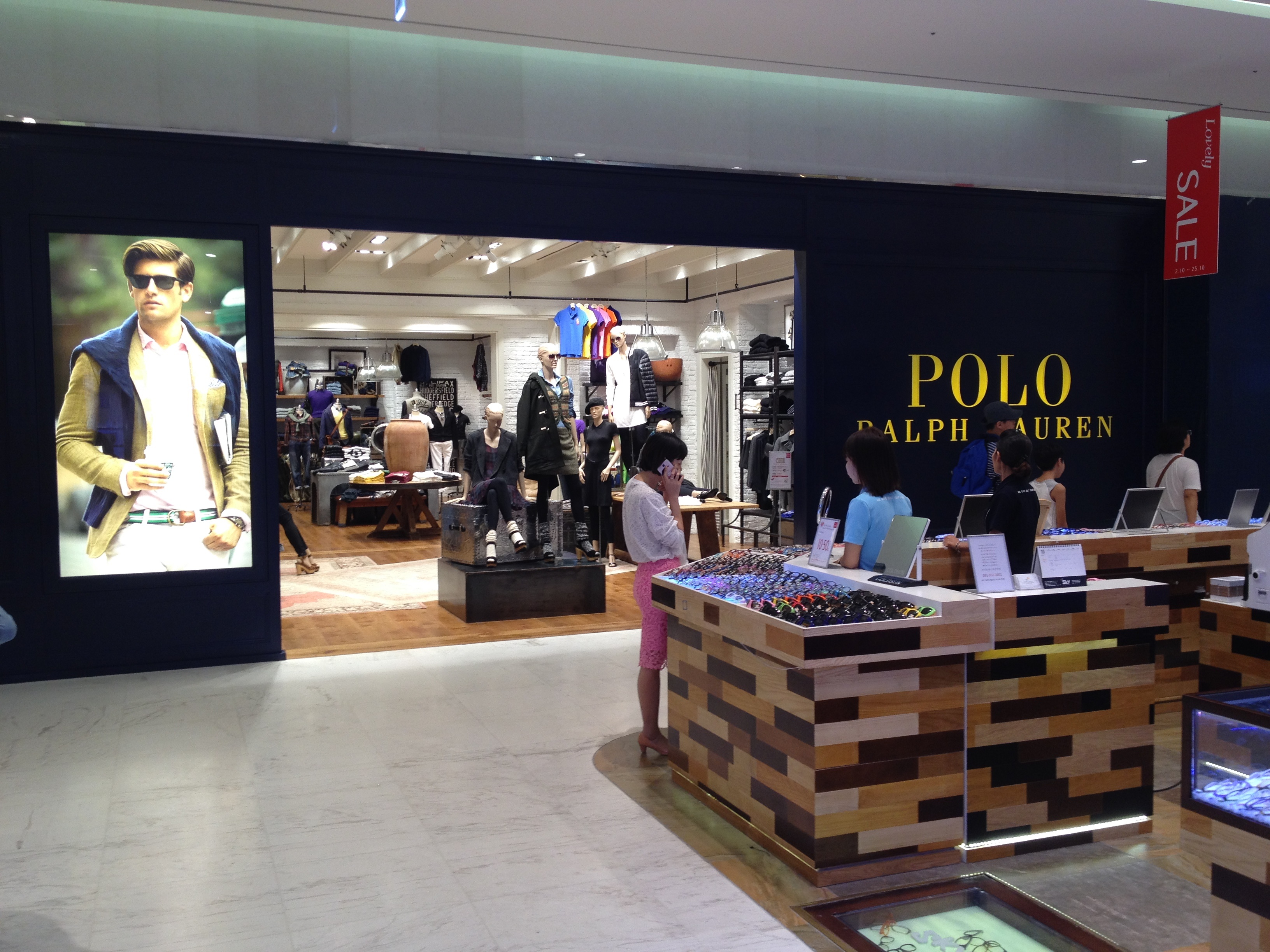Usually, getting more expensive is a bad thing, but fashion manufacturers like Ralph Lauren, Michael Kors, and Coach have been celebrating the return of their luxury shine.
Since the recession, each has battled discounts, both in their own shop and more problematically among department stores, as they attempt to reassert themselves as luxury items aspired to by many but attainable for only the few.
Without that image, they are stuck in the middle, trapped between bargain shoppers who view their full prices as ludicrous and only temporary, and luxury shoppers who view full price merchandise as undesirable because it will ultimately become attainable to bargain shoppers.
It's a position nobody wants to be in. Ralph Lauren, for example, has seen a net sales decline each quarter since the end of 2015. Now, each brand is trying to walk a delicate line between the masses and the few, while also threading pretty complicated needle as they redefine their relationship with their retail partners.
That 2008 Recession Sure Was a Bummer
The trials and tribulations of in-store fashion retail are well known at this point, but much of the focus has fallen on the department stores themselves, not the fashion houses making the clothes. And while they do have common goals—increased sales being the most paramount—in tough times, their aims can become opposed. Indeed, throughout the recession, department stores slashed prices on many 'luxury' brands in order to drive traffic and stay afloat.
While this might have kept brands like Ralph Lauren, Coach, and Michael Kors in the short term, those long-term chickens are coming home to roost. Customers are now trained to expect discounts on nearly every purchase, changing the way Americans shop while simultaneously devaluing Lauren, Coach, and Kors brands. Now, it's not just that customers expect discounts on last year's Michael Kors jacket at Macy's, they expect lower prices across the board on all Kors merchandise. Thus, even the direct-to-customer channels are impacted as they must necessarily compete for wallet share with the department stores already discounting their merchandise.
In summary, “There are too many brands, too many stores and too much space, chasing far too little spend,” according to consultant Neil Saunders. “One of the issues is that the department stores are not playing ball, and they are still discounting very heavily because they are trying to draw in customer traffic.”
The Real Meaning of Luxury
But why are discounts bad in the first place? Shouldn't fashion manufactures want as many people in their clothes as possible? If you are Old Navy, sure. But for aspirational brands hoping to connote luxury, style, and—for lack of a better word—coolness, the masses are trouble on two levels: 1) They (ok: we) muddy the brand by making it appear accessible to everybody, and 2) they drive down the price by aggressively seeking out sales on older items rather than breathlessly anticipating full-price, in-season items.
Even the most darling cashmere is a bit less darling if it can be envisioned three months from now in a discount bin, and three months after that on anybody and everybody.
You don't need fashion market research to tell you: luxury isn't just about superior composition, it's about scarcity and exclusivity. It's not just that Prada leather bags are so soft you could spread them on toast (truth), it's that very few people actually know somebody who owns a Prada bag. The same goes for brands like Ralph Lauren, Coach, and Michael Kors—sure, they are a few steps down from the hyper-luxury of Prada, Hermes, and Gucci, but they still need to be out of reach for the majority of middle-class consumers in order for their target market to desire them.

How to Drive Up Your Own Price
And with deep-discounting becoming the norm in post-recession department stores across the country, these brands have each lost some serious cachet. Thus, each manufacturer has embarked on a campaign to reposition themselves as luxury, as opposed to every day.
Ralph Lauren has been reducing wholesales to retailers to avoid undesirable discounts, eating their own excess surplus rather than discounting it, and discontinuing some of their less prestigious brands like Denim and Supply, all in the name of getting more expensive.
Similarly, Coach has been pulling their bags from department stores, including over 250 locations last year alone. At the time, Coach executive Victor Luis told analysts, “While we understand that customers may use department stores for trial and shopping across brands, the high level of promotional impressions created negatively impacts our long-term brand health.” Michael Kors is also actively working to reduce its own discounts (there have been 42 less discounts this year already) while also working with department stores as much as possible.
Fashion Manufacturers and Retailers: A Symbiotic Codependence
But this is where things start to get even more complicated. Asserting control of a brand and its price points seems like the logical move—stop selling wholesale to discount-mad retailers, and instead go direct to consumer as much as possible, both online and brick-and mortar. This, however, disrupts the fragile relationship these brands have with department stores.
Consultant Natalie Kotlyar offers a pretty concise rundown of the former order of things: “The dynamics between luxury brands and department stores have changed over the years. The retailers were once a dominant channel for fashion houses to bring exposure to their handbags and dresses. Department stores didn’t face as much competition and were less reliant on discounts. And brands would sell the stores exclusive items to make sure products didn’t clash with what was at their own shops.”
Yes, this harmony has been disrupted; yes, it's time for a few small repairs. But the trouble is, despite the fact that the malls of America as we know them may be dying, they to this day continue to give brands like Ralph Lauren and Michael Kors life.
Every Time a Customer Pays Full Price, a Brand Manger Gets His Wings
As of August 2017, for example, Macy's still accounted for roughly of 10% of Ralph Lauren's total sales. Go ahead, read that sentence again. Department stores account for nearly 70%. Read that one again too.
So it's not like Ralph can just take his polo ball and go home—even as department stores undermine Lauren's brand promise, the company still relies on them. By pulling merchandise from stores and removing it entirely from others, these brands further contribute to the precipitous decline of the very malls they continue to rely upon. That's why slow steps are called for—best to slowly and completely build out direct-to-customer channels, ensuring they are fully operational and self-sustaining, before throwing the mall out with the department store bathwater.
And it seems to be working. Kors and Lauren both have been posting profits this year for first time in quite some time, with Michael Kors currently up 22% and Ralph Lauren 11%. And Coach, has seen same-store sales increases for the first time in two years, and more importantly are charging more per handbag.
This is obviously welcome news, with Bloomberg analyst Chen Grazutis noting, “Clearly, the significant improvement in gross margin is a great sign the strategy of tightening inventory and pulling back on promotions is helping profitability.” But Grazutis is hedging his bets, adding, “The jury is still out as to how successful the company could be in bringing consumers back to the brand and drive top-line growth.”
The road back to the road paved with gold cards may be a tough one, but Michael Kors COO John Idol believes they are well on their way. According Idol, customers “aren’t fighting us on [price]…As long as we are giving them the right product, they're responding extremely well.”
Executives from all three fashion houses hope he is correct, that they might “regain the permission to charge full price.”
Check out our Fahion Industry Market Research in our 2017 Retail Industry Report.

